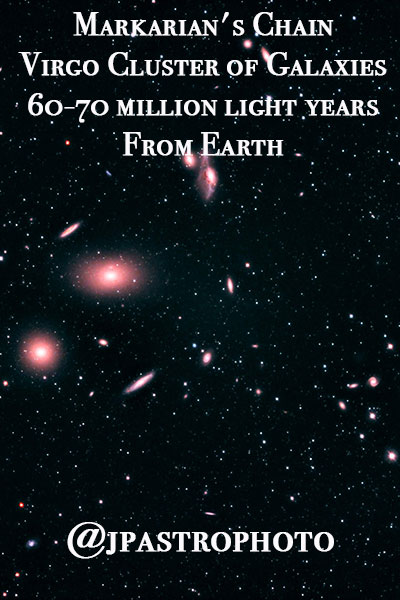
The stars depicted in the blog banner was taken by JP Astrophotography It is NGC6960, taken over 8 hours 51 minutes on 10/1-10/3, 540mm, full moon.
Night Shift With An Astrophotographer
Galaxies and why they’re amazing AF
“Galaxies are fun subjects to photograph. I love to imagine all of the worlds and possibilities that lay inside them. It’s a challenge to get a good shot because they are so unimaginably far away, but every time I do – without fail – it blows my mind.” – Jeff Palmer, JP Astrophotography
What is a galaxy?
A galaxy is a smorgasbord of stellar remnants, dust, gas, stars and dark matter that are gravitationally bound. Our solar system is located in the Milky Way Galaxy.
The word galaxy itself is Greek in origin and literally translated means “milky”, a reference to the Milky Way, and is probably a reference to the milky-light band of stars we see in the night sky, which is actually us looking toward the center of the galaxy from our position on the Sagittarius spiral arm of the Milky Way.
So, how big is a galaxy?
Galaxies come in all shapes and sizes. Ranging from dwarfs that have only a few hundred million stars to giant galaxies with over one hundred trillion stars. All of the stars, gas, dust, debris, and inner stellar matter of a galaxy orbit the galaxy’s center of mass.
Galaxies are huge, and are measured in parsecs. Parsecs are a unit of measurement used to calculate astronomical distances. A single parsec is approximately equal to 31 trillion kilometers or 19 trillion miles! One parsec=3.3 light years. Most galaxies are about 1,000-100,000 parsecs in diameter. The Milky Way Galaxy is 30,000 parsecs or 100,000 light years across.
Galaxy morphology
Galaxies are categorized by astronomers by their visual structure. They are categorized as elliptical, spiral or irregular.
Galaxies and Black holes
It is thought that many galaxies have supermassive black holes at their center–this would explain the tremendous gravity causing stars, interstellar remnants, dust, and even dark matter to orbit the central mass.
Our very own Milky Way Galaxy has a central black hole known as Sagittarius A, and has a mass four million times greater than the Sun!
A view of the past
Viewing other galaxies through telescopes can be breathtaking, but did you also know it is seeing into the past?
That’s right. Your very own sight is a version of time travel. Don’t believe me? Because of the speed of light, and the vast distances of galaxies from our location, the light we observe is often millions or even billions of light-years old. The light the star is currently emitting won’t be visible to us for millions or billions of years in the future.
The Light Year Misnomer
Often, because it includes the word “year”, the term light-year is misinterpreted as a unit of time! The term light-year is actually an expression of astronomical distance.
A light year is the length light travels in a vacuum in one Julian calendar years (about 365.5 days) according to the International Astronomical Union. In terms of lengths and measurements we use here on Earth, a light year is equivalent to 9.46 trillion kilometers or 5.88 trillion miles.
The light-year is most often used when expressing distances to stars and other distances on a galactic scale. Google Maps will not be expressing your trip distance in light years… yet!
So… how many galaxies are out there?
Estimates were revised in 2016 for galaxies in the observable universe from the previous estimate of 200 billion to two trillion or more! All the stars combined in these galaxies total more than the grains of sand of the Earth.
Order JP Astro Prints and Wake Up to a Galaxy Every Day
“We have a metal print of one of our deep space photographs hanging on the wall next to our bed. I love that it is usually the first thing I see when I open my eyes in the morning – an intergalactic bridge between sleeping and waking life. Before starting my Earthly activities for the day, I like to take a few moments to get lost in the vastness of it all and appreciate how we are at once both so insignificant and so important in the Cosmos.” – Katie Towner, JP Astrophotography
It is not too late to own your very own JP Astro Print this holiday! Wake up to a gorgeous photograph of a galaxy far, far away and at a price that is affordable for any art lover’s budget.
Support indie! Support WNC artists Katie Anne and Jeff, and own a view of the night sky that rivals any other. Visit JP Astro Photography,
Prints make AMAZING gifts and couple well with a time travel paperback… wink wink.
Want to know when the next Night Shift Blog Post drops? Sign up for Bella’s Cosmic Newsletter to have these blog posts sent right to your Inbox and follow me on Instagram @Tinacapricornwrites to get bonus features and behind the scenes info on My Writerly Life. Until then have a merry, merry star gazers!






